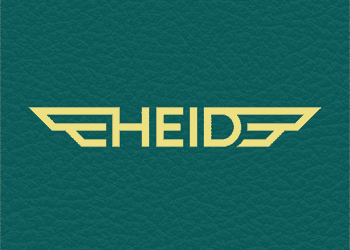Symbols of life and death have been integral to human cultures across the ages, serving as profound representations of transformation, renewal, and the cyclical nature of existence. From ancient rituals to modern art, these symbols continue to resonate, offering pathways for personal growth and collective healing. Understanding their significance in historical and contemporary contexts reveals how they can inspire rebirth even in today’s fast-paced world.
- The Concept of Rebirth: From Ancient Beliefs to Modern Interpretations
- Mythological Foundations of Symbols of Life and Death
- Cultural Expressions and Artistic Representations of Rebirth
- Educational Perspectives: Teaching the Power of Symbols to Foster Resilience and Hope
- Modern Examples of Rebirth Inspired by Ancient Symbols
- Non-Obvious Dimensions: The Psychological and Neurobiological Impact of Symbols
- Challenges and Ethical Considerations in Using Symbols of Death and Rebirth
- Conclusion: Can Symbols of Life and Death Truly Inspire Rebirth Today?
The Concept of Rebirth: From Ancient Beliefs to Modern Interpretations
Throughout history, various cultures have regarded death not as an end but as a transition to another form of existence or a new beginning. Indigenous tribes in Africa and the Americas, for example, often see death as a passage to ancestral realms, emphasizing continuity rather than finality. Similarly, Eastern philosophies like Buddhism and Hinduism conceptualize rebirth as a cycle driven by karma, where life continuously renews through reincarnation until enlightenment or liberation is achieved.
Psychologically, the idea of rebirth resonates with human experiences of trauma, loss, and recovery. Philosophers like Carl Jung viewed symbols of death and renewal as essential archetypes that facilitate inner transformation. These symbols act as catalysts, prompting individuals to shed old identities and embrace new facets of themselves, fostering resilience and hope in times of crisis.
In collective terms, societies utilize symbols of death and rebirth—such as national revolutions, spiritual awakenings, or cultural renaissances—to foster societal renewal. These processes often involve rituals, narratives, and art that reinforce the possibility of transformation amidst adversity.
Mythological Foundations of Symbols of Life and Death
Myths serve as profound vessels for existential themes, often illustrating the perennial cycle of death and rebirth through compelling stories. These narratives encode cultural values and offer models for understanding human life’s transient yet regenerative nature.
A quintessential example is the myth of Orpheus and Eurydice. This tragic love story symbolizes hope amid despair; Orpheus’s daring descent into the underworld to retrieve Eurydice embodies the human desire to transcend death and restore life. While his attempt ends in loss, the myth ultimately underscores the possibility of renewal through love and perseverance.
In Greek mythology, musical instruments like the lyre, played by Orpheus, hold sacred significance. The lyre’s enchanting melodies are believed to influence the divine realm and facilitate transformations—both spiritual and emotional—highlighting music’s role as a conduit for rebirth and hope.
Cultural Expressions and Artistic Representations of Rebirth
The themes of death and renewal permeate literature, opera, and theater. Works like Dante’s Divine Comedy depict journeying through the afterlife as a metaphor for moral and spiritual rebirth. Modern theater and film continue to explore these motifs, illustrating the universal human inclination for transformation.
Visual arts and rituals are also powerful channels for expressing these themes. For example, Día de los Muertos (Day of the Dead) celebrations honor ancestors and symbolize ongoing life cycles through colorful altars and symbolic offerings. In Eastern cultures, Buddhist rituals emphasize rebirth and enlightenment, often involving intricate mandalas and meditative practices.
Contemporary artists reinterpret these symbols—using installations, performance art, and digital media—to explore personal and societal transformations. An example is the modern reinterpretation of mythological motifs in works that challenge viewers to reflect on mortality and renewal, such as the ongoing cultural phenomenon rise of orpheus apk (android) 🔥, which channels ancient themes into interactive digital experiences.
Educational Perspectives: Teaching the Power of Symbols to Foster Resilience and Hope
Incorporating mythological and cultural symbols into education can deepen students’ understanding of human resilience. By exploring stories like that of Orpheus or Día de los Muertos, educators can foster empathy and inspire hope amid adversity. Such symbols serve as powerful tools for personal growth and community cohesion.
Case studies reveal that programs integrating symbolic storytelling—through art projects, dramatizations, or storytelling workshops—enhance emotional intelligence and resilience. For example, narrative therapy often employs symbols of death and rebirth to help individuals process trauma and envision new life paths.
Research indicates that engaging with symbols activates neural pathways associated with emotional regulation and positive visualization, promoting mental health and community healing. This underscores the importance of teaching symbolic literacy as part of holistic education.
Modern Examples of Rebirth Inspired by Ancient Symbols
| Example | Description |
|---|---|
| Rise of Orpheus | A contemporary digital project that reimagines the myth of Orpheus, connecting past and present through interactive storytelling and multimedia, illustrating the enduring power of myth to inspire renewal. Interested readers can explore its innovative approach via rise of orpheus apk (android) 🔥. |
| Rebirth Movements | Various social and cultural movements, such as eco-revivals or community healing initiatives, draw on ancient symbols to foster hope and resilience amidst crises. |
| Media and Technology | Films, virtual reality projects, and digital storytelling leverage symbols of death and rebirth to engage audiences in transformative narratives. |
Non-Obvious Dimensions: The Psychological and Neurobiological Impact of Symbols
Research in neuroaesthetics shows that symbols of life and death activate subconscious processes linked to renewal. These symbols bypass cognitive defenses, engaging emotional centers such as the amygdala and hippocampus, which are crucial for memory and emotional regulation.
Rituals incorporating these symbols—like mourning practices or initiation rites—facilitate trauma recovery by providing a structured framework for expressing grief and embracing new beginnings. Psychologists note that such symbolic acts can rewire neural pathways, fostering resilience and mental health.
This neurobiological perspective underscores why symbols are universally potent: they tap into fundamental aspects of human cognition and emotional processing, making them invaluable tools for healing and personal growth.
Challenges and Ethical Considerations in Using Symbols of Death and Rebirth
While powerful, the use of death and rebirth symbols requires careful cultural sensitivity. Appropriating sacred symbols without understanding their context can lead to misinterpretation or offense, undermining their transformative potential.
There is also a risk of trivializing profound themes in commercial or entertainment settings. Commercialization can strip symbols of their depth, diluting their significance and potentially causing harm.
Balancing authenticity with innovation involves respecting cultural origins while adapting symbols for contemporary use. Engaging with cultural experts and communities is essential to maintain integrity and deepen understanding.
Conclusion: Can Symbols of Life and Death Truly Inspire Rebirth Today?
The enduring presence of symbols of life and death across cultures illustrates their fundamental role in human psychology and society. They serve as bridges between myth, culture, and individual experience, offering profound pathways toward renewal and hope.
Modern reinterpretations—such as the rise of orpheus apk (android) 🔥—demonstrate how ancient themes continue to inspire contemporary creativity and resilience. By understanding and respecting these symbols, individuals and societies can harness their transformative power to foster personal and collective rebirth.
“Symbols of death and rebirth are not merely relics of the past—they are living tools that can inspire hope, resilience, and renewal in every generation.”

